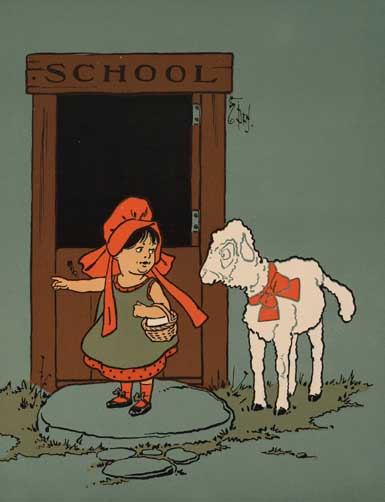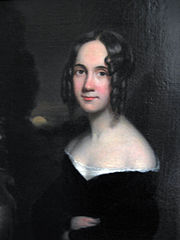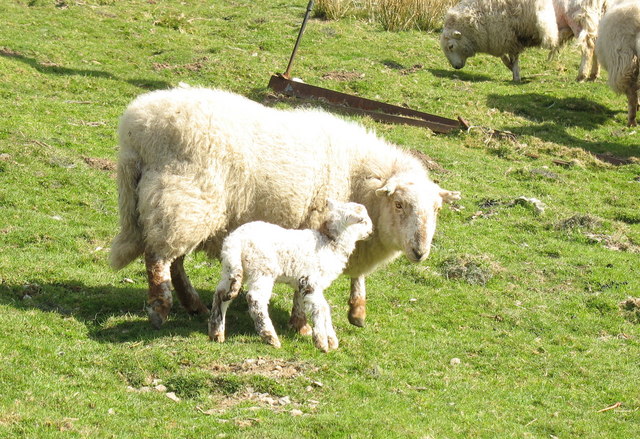
Once upon a time on a blustery March morning in 1816, Mary Sawyer and her father got up early to feed the cows, and then made their way to the sheep pen. There were two new lambs, one of which the mother rejected. It was nearly dead when Mary saw it.
Mary took the lamb back to the house, wrapped it in old clothes, and held it in her arms beside the fire. Curiously, she tried to feed the lamb – whose name remains unknown – catnip tea. All day and through the night, Mary sat up with her lamb. In the morning, it was able to stand and began drinking milk. The hand-fed lamb became Mary’s special pet, coming when she called

A few days later, Mary and her brother Nat set off for the local school. Mary called out to the lamb which came trotting forward. Nat suggested they take the lamb to school so Mary put the lamb in her basket with a blanket over it. When they got to the classroom, she set her parcel by her feet. All was well until the lamb decided to bleat.

The teacher shooed the lamb outside, where it waited patiently until Mary appeared to take it home for lunch.
Serendipitously, a young man named John Roulstone was present at the school that day, and composed a few lines of doggeral poetry to mark the occasion. It went something like this:
Mary had a little lamb, its fleece was white as snow
And everywhere that Mary went, the lamb was sure to go
It followed her to school one day which was against the rules
It made the children laugh and play to see a lamb at school
And so the teacher turned it out, but still it lingered near
And waited patiently about til Mary did appear.
In due course, the lamb grew big enough for Mary’s mother to harvest the wool and knit her daughter a pair of lamb’s wool stockings.

Some years later, Sarah Josepha Hale came across the poem, added some uplifting stanzas, and published Mary’s Lamb in her collection of Poems for our Children in 1830. Sarah’s additions:
Why does the lamb love Mary so, the eager children cry.
Why Mary loves the lamb, you know, the teacher did reply.
Later in the decade Lowell Mason set the rhyme to music and added the repeating lines that make the poem fun to sing.
Remember Mary’s lamb’s wool stockings? Mary kept them. In the 1870s, Mary donated the stockings to a fundraising project for the Old South Meeting House in Boston. Wool from the stockings was attached to cards that said “Knitted wool from the first fleece of Mary’s Little Lamb.” Who could resist?
Perhaps Thomas Edison recited the most famous rendition of Mary Had a Little Lamb. In 1877 Edison demonstrated his new invention: the phonograph. As he recalled events a year later:
“I designed a little machine using a cylinder provided with grooves around the surface. Over this was to be placed tinfoil, which easily received and recorded the movements of the diaphragm … Kruesi (the machinist), when he had nearly finished it, asked what it was for.
“I told him I was going to record talking, and then have the machine talk back. He thought it absurd. However, it was finished, the foil was put on; I then shouted ‘Mary had a little lamb,’ etc. I adjusted the reproducer, and the machine reproduced it perfectly.
“I was never so taken aback in my life. Everybody was astonished. I was always afraid of things that worked the first time.”
In 1927 Edison made a second recording for the Golden Jubilee of the Phonograph.
Paul McCartney and Wings recorded their own version of Mary Had a Little Lamb in 1972. It was not a hit.
Spoofs on Mary Had a Little Lamb, many on the naughty side, are plentiful. This one is called Mary’s Last Supper:
Mary had a little lamb, a litte pork, a little jam,
a little egg, a little toast, some pickles and a great big roast,
an ice cream soda topped with fizz —
and, oh, how sick our Mary is!

Illustrations:
Mary and Her Lamb, 1877
Two illustrations by William Wallace Denslow, 1902
Sarah Josepha Hale, about 1831. Artist James Reid Lambdin
Newborn Lamb on Indby-Fields Fferm Dyrrfryn Mymbryr by Eric Jones
“Mary Had a Little Lamb.” New England Historical Society.
“Mary’s Last Supper.” All Poetry.
Kat Eschner. “Mary Had a Little Lamb is Based on a True Story.” Smithsonian, May 24, 2017

Sandra Wagner-Wright holds the doctoral degree in history and taught women’s and global history at the University of Hawai`i. Sandra travels for her research, most recently to Salem, Massachusetts, the setting of her new Salem Stories series. She also enjoys traveling for new experiences. Recent trips include Antarctica and a river cruise on the Rhine from Amsterdam to Basel.
Sandra particularly likes writing about strong women who make a difference. She lives in Hilo, Hawai`i with her family and writes a blog relating to history, travel, and the idiosyncrasies of life.


That was fun!